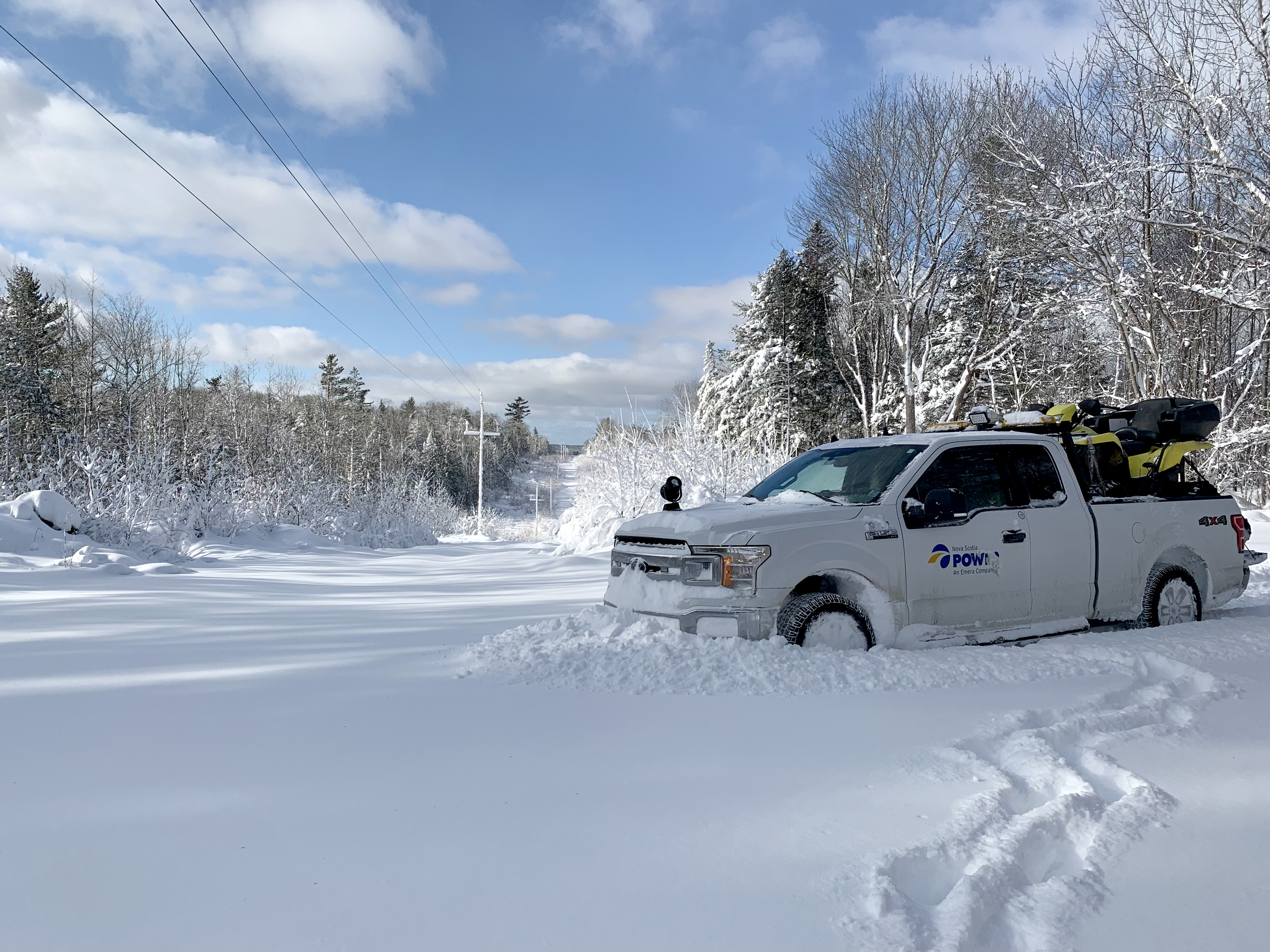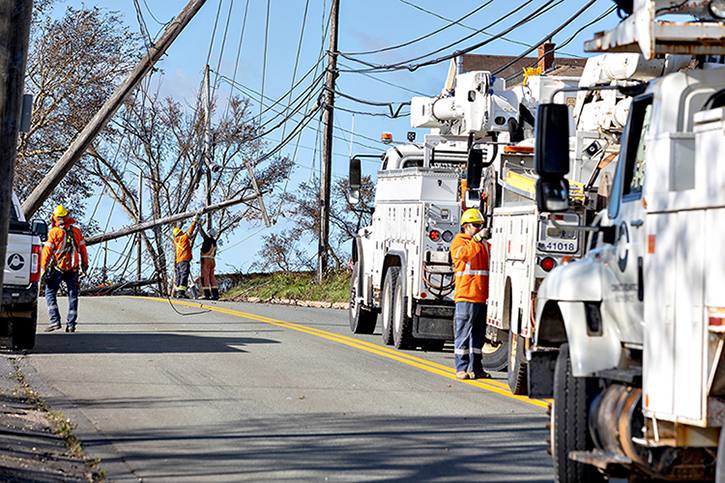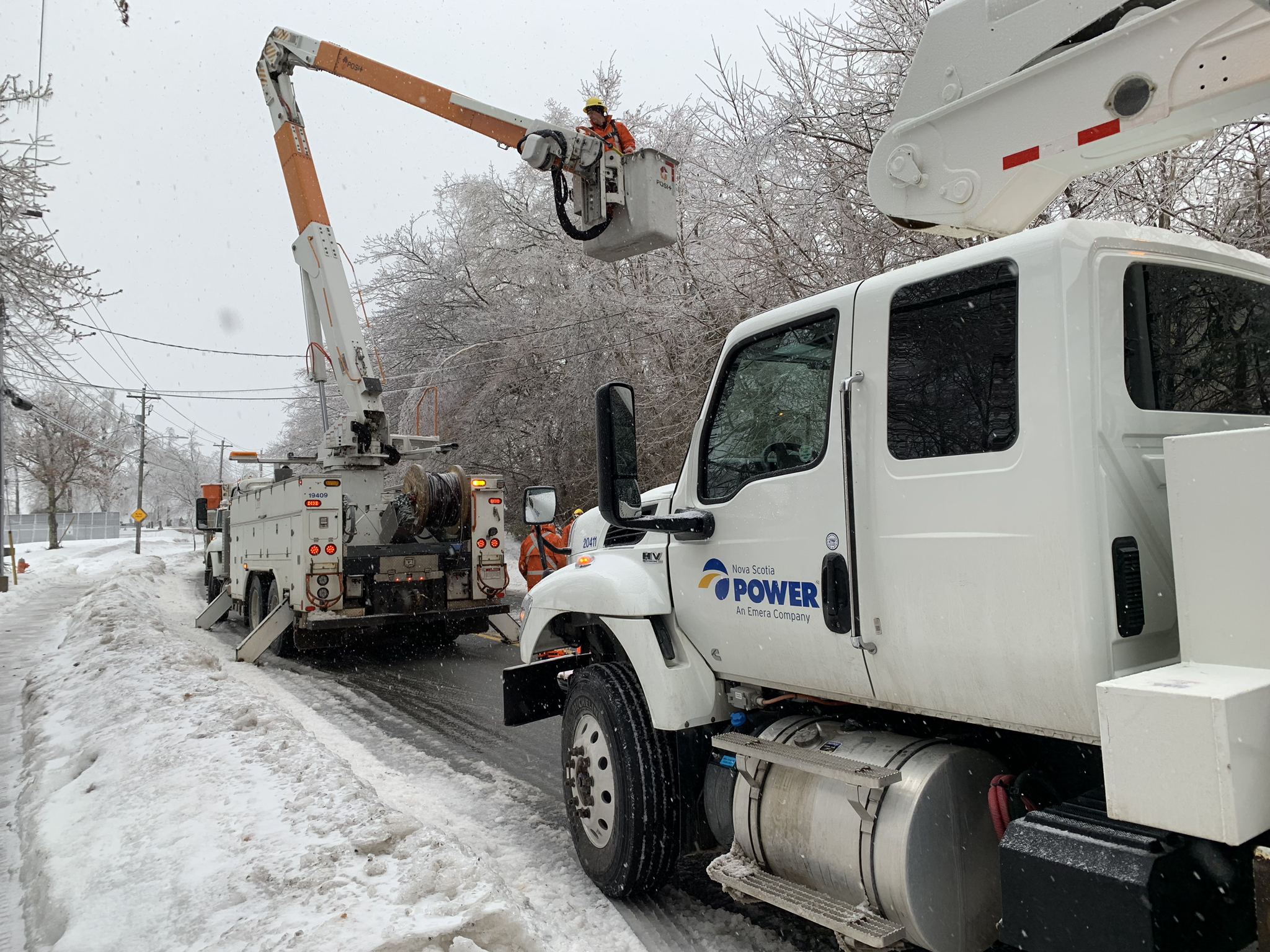Safety tips: How to stay safe and ready this storm season

If there’s one thing we know about winter in Nova Scotia, it’s that it can bring some powerful storms—like nor’easters.
Winter weather can mean a unique set of challenges for our crews. Strong winds, heavy snow and freezing rain can weigh down our powerlines, damage poles and bring trees into contact with our equipment. Winter weather also makes roads dangerous for our teams to navigate during storm response. For example, during a 2022 winter storm, we had to clear feet of snow in parts of the province, so that our trucks could drive down rural roads and reach our lines!
The challenges that come with winter weather make staying prepared critical—both for our crews, and for our customers.
We know power outages are inconvenient and can impact your life. That’s why we’re sharing how our team stays storm ready, and we encourage you to do the same by following these safety and preparedness tips.
Before a storm
| Our teams | Customers |
|---|
- We always monitor the weather to stay ready for any upcoming events that may impact our power system and customers.
| - You can track the weather by following local weather reports or by visiting Environment Canada.
|
- When we see a storm is making its way towards Nova Scotia, we use a damage prediction tool and scenario planning modelling that allow us to estimate the impact.
| - Please fully charge your cell phone—it becomes essential during an outage, as you’ll be able to get the latest information, update others and check on loved ones.
|
- The damage prediction is based on weather conditions, the expected path of the storm, and data gathered during previous storms. This enables our team to analyze the areas that will be most impacted, so that we can safely position our crews and bring in extra resources as needed.
| - Prepare a 72-hour emergency kit with canned and dried foods, manual can openers, water (2 litres per person per day), batteries, flashlights, a first aid kit, blankets and cash, a mobile phone, a power bank charger, prescriptions and any other necessary medical supplies.
|
- It also helps us estimate when restoration for most customers will be complete and the power will be back on. This gets updated throughout the storm on outagemap.nspower.ca, as more damage information from our crews becomes available.
| - Save our outage line 1-877-428-6004 to your contact list on your cell phone.
- Follow us on Twitter for updates on the storm, our response and power restorations.
- Update your contact information in MyAccount—so our Customer Care Centre can reach you, if necessary.
|
- Armed with information about the storm’s impact, and depending on its magnitude, we open our Emergency Operations Centre (EOC) and bring our EOC team together. This is the team that manages our storm planning and response and works closely with the Nova Scotia Emergency Management Office—to coordinate our restoration efforts across the province.
| - Turn off and unplug electrical equipment such as televisions to avoid electrical surges, if you do lose power.
- Lower the temperature of your fridge to 40ºF/4ºC and of your freezer to 0ºF/-18ºC.
|
- The EOC is the nerve centre for outage restoration. It’s staffed with employees representing all aspects of our company, allowing us to collaborate and react quickly.
| - Learn to manually operate your automatic garage door.
- Make sure backup generators are installed by a qualified electrician and follow the manufacturer's safety instructions.
|
- If you follow us on Twitter, you can see our storm response updates posted, including EOC activation and how our crews are prepared and responding—we also encourage our customers to prepare as well.
| |
During a storm
| Our teams | Customers |
|---|
- If wind is blowing at 80 km per hour or higher, our crews stand down and don’t go up in bucket arms for safety reasons.
| - For safety, consider all cables and wires to be live whether they are electrical, cable or telephone and stay a school bus distance (20 metres) away.
|
- When crews are grounded, they focus on assessing storm damage and relocating to hardest-hit areas—this helps ensure a strong and quick response right after the storm passes.
| - If a line is in the water, there is even more reason to be cautious—consider it and the water energized.
|
- Our crews would also work on replacing and repairing poles during a storm. They can do a temporary fix to put the pole back up in the air safely and restore power to customers affected.
| - Keep children away from all flooded areas and areas with lots of debris, because the water or storm debris could be hiding a live wire.
|
- Once the wind is below 80 km per hour, our crews go up in bucket arms to safely restore power to our remaining customers as quickly as possible.
| - You shouldn’t try to remove or trim branches near a powerline. If a tree or tree limbs have fallen on a powerline or pulled it down, keep a safe distance from the line or the tree. Contact us as soon as you can at 1-877-428-6004 to report it.
|
After a storm
| Our teams | Customers |
|---|
- After the storm passes, we restore power in a specific order starting with any emergency safety concerns.
- Then we restore power to the substations and main power lines that bring electricity from power plants to our towns and cities.
- After that, we focus on critical services identified by the Emergency Management Office such as hospitals, police, fire, water and communications.
- Next, we repair power lines that will restore power to the greatest number of customers in the least amount of time, including high density buildings or neighbourhoods.
- Once these repairs are made, crews restore power to smaller groups of customers and individuals.
| - Storms can cause electrical damage to individual properties, which require a certified electrician to repair before we can safely restore the power to your home or business.
|
- To prepare for the next storm, one of the main focuses of our post-storm cleanup involves cutting trees and branches that were damaged or weakened by the storm.
- Crews identify those damaged and weakened trees and trim them to avoid them falling into our powerlines during future storms.
| - If your meter mast is damaged, you need to get an electrical contractor to make repairs before we can restore power. Find more information on Meter Mast Repairs.
|
- Another focus of the cleanup work for our crews is making permanent repairs to power poles that were damaged during storms.
- This type of cleanup is standard practice for us following any storm, no matter the size.
| - Please make sure to replenish your emergency kit, supplies and any other required item—so that you’re prepared for next time.
|
For more information on storm safety, visit our Storm Ready webpage.
You can also download our storm safety and preparedness checklist to ensure you too can stay storm ready.
Share This Post:






